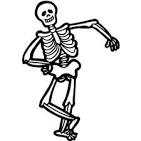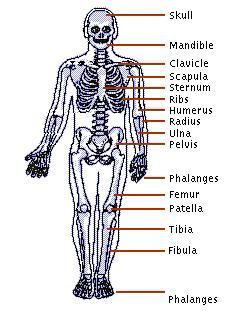
The roller board, aka scooter board, is a super-duper piece of equipment to acquire. Inclement weather—pouring rain, snow flurries or freezing temperatures—can keep us inside. Pull out the roller board and add it to your environment for indoor play. Here are 10 rockin’ and rollin’ ideas and activities appropriate for three to five year olds. First, though, some safety considerations and benefits:
Safety Recommendations:
- Only sit or lay on the roller board
- Never let a child stand on a roller board
- Keep hands clear from the bottom of the roller board
- Use handles to carry the roller board
- Tie back long hair and tuck in loose clothing
- Check wheels regularly
- Prevent roller boards from crashing into others
Benefits:
- Upper body strengthening (arms, legs and hands)
- Core strengthening
- Motor planning
- Balance
- Bilateral coordination
- Physical endurance
- Tactile stimulation
- Kinesthetic stimulation
- Vestibular stimulation
- Crossing midline skills
- Eye-hand coordination

And now for the activities!
Movement Exploration Experiences
Have children explore different ways to move around the space using the roller board.
- One hand on roller board
- Two hands on roller board
- Two hands and one knee on roller board
- Kneel on roller board
- Sit on roller board, move backwards
- Sit on roller board, move forward
- Lie on stomach (prone position), move forward
- Lie on stomach, move backwards
Hoop Ball Shooting
- Place Hoop Ball Goal in open space
- Child sits on roller board holding a ball
- Child moves forward using feet to the Hoop Ball Goal and attempts to shoot the ball into the hoop
- As the child becomes more proficient, challenge him/her to move farther way from the hoop (no more than six to eight feet)
Rope Pull
- Adult holds one end of a long jump rope
- Rope goes under roller board and between wheels
- Child takes prone position (lying on stomach) on roller board and grips rope at opposite end from the adult
- Child pulls self toward adult using a hand-over-hand grip on the rope. Feet do not touch the floor
Puzzle Piece Play
- Scatter puzzle pieces at one end of the room or space
- Place the corresponding puzzle boards at the other end
- Child sits on roller board
- child moves around space using feet, finds and grasps a puzzle piece
- Child travels with puzzle piece to find the matching puzzle board and puts the piece into its place
- Game continues until all the puzzles have their matching pieces
Roller Board & Cone Obstacle
- Set up three cones in a line about 3-4 feet from each other
- Child takes prone position on roller board and uses hands and arms to propel roller board around cones and back to starting position. Body is balanced on roller board, feet do not touch floor, and hands and arms work in rhythmic coordination.
- Child can try the same challenge sitting on knees on the roller board.
Free Ride
- Child sits cross-legged on roller board
- Child holds a hoop and adult pulls the child around
- Speed of travel depends on the child’s stability on the roller board and his or her enjoyment of speed
Fly Like an Eagle
- Need large, clear space to play
- Child takes prone position on roller board
- Tell child he/she is going to “fly like an eagle” across the room or down a long hallway
- Adult holds on to child’s feet and gives child a big push
- Child will have to work hard to keep head, arms (held out like wings), and legs lifted while moving forward
Body Bowling
- Set up bowling pins at one end of the room
- Just like in the “Fly Like and Eagle” activity above, child takes prone position on the roller board
- Child keeps arms out in front (i.e. a superman “flying” position)
- Adult holds onto child’s feet and gives child a big push forward
- Child attempts to knock down the bowling pins
Grocery Shopping
- Scatter plastic fruits and vegetables around the room
- On the opposite end of the room, place rainbow colored baskets
- Child sits on roller board
- Child moves around space using feet and picks up a fruit or vegetable
- Child travels with the piece of play food and puts it into the matching colored basket
- Game continues until all of the fruits and vegetables have been “bought.”
Crazy Driver
- Mark of a path or road using Mavalus Removable Poster Tape. Create a single line of tape or two lines to form a “lane” for the child to stay in. Make curves, zigzags, twists or turns.
- Challenge child to “drive” along the road either in prone position, sitting on knees, or sitting on bottom
Product Recommendations
- Roller Board (ROLLIT or ROLLUS)
- 16′ Nylon Jump Rope (JMPRP16)
- 25′ Diameter Floor Goal (SLAMDUNK)
- 9″ Basketball (BBALL)
- High-Bounce Play Balls (BOUNCE)
- Knob Puzzle (TPUZSET)
- Brawny Tough Activity Hoops (HOOPSET)
- Colored Cones (SETC)
- Soft Bowling Set (BWLSET)
- Life-Sized Fruit & Vegetables Set (FOODSET)
- Classroom Activity Baskets (CATCHY)
- Mavalus Removable Poster Tape (MAVALUS)
- Child Trike Helmet – Red (HLMTR)



















